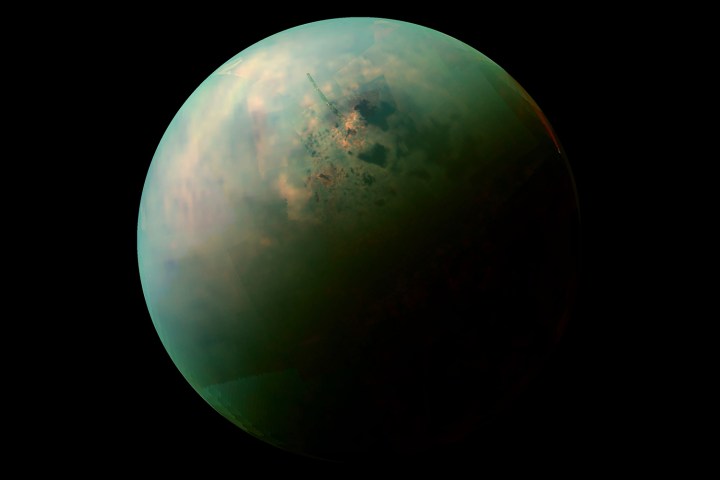
While scientists have long suspected that Titan might host vinyl cyanide, it was previously naught more than an inference. But now, NASA’s Cassini probe has achieved the “first spectroscopic detection” of the compound. Astronomers used data from the Atacama Large Millimeter Array, or ALMA, to draw their conclusions.
Titan has been a prime candidate for extraterrestrial life for quite some time. After all, the surface of the moon shows lakes, and Titan also features an atmosphere comprised mainly of nitrogen and compounds similar to those found on Earth that are crucial to life. The discovery of vinyl cyanide is yet another reason to continue researching Titan for its life-sustaining possibilities.
“This is a far cry from saying [life] definitely happens on Titan and these cells are involved in some kind of primitive life,” co-author Martin Cordiner, an astrochemist at NASA’s Goddard Space Flight Center, told The Verge. “But it gives us a starting point in that discussion. If there was going to be life in Titan’s oceans, then it’s plausible vinyl cyanide could be a component of that.”
There is still no absolute proof that cell membranes could ultimately exist on Titan. In order to make that determination, we’d need to send another probe to Saturn’s moon. “There’s been some discussion of maybe sending a boat or something like that to Titan to observe what’s really going on in the lakes,” co-author Maureen Palmer, an astrochemist at NASA’s Goddard Space Flight Center, told The Verge. “That’d be really cool to see.”
At the end of the day, concluded Cordiner, “As we explore more in the outer Solar System, these moons of the giant planets reveal to us that they are much more fascinating environments than we could have ever imagined. Complex chemistry is not unique to Earth.”
Editors' Recommendations
- Saturn’s moon Titan may be more Earth-like than we thought
- Could there be microbial life in the ocean of Saturn’s moon Enceladus?
- Saturn’s moon Titan could have the ingredients for life
- Infrared imaging reveals fresh ice on Saturn’s moon Enceladus
- Could Enceladus, the icy moon of Saturn, be capable of supporting life?


